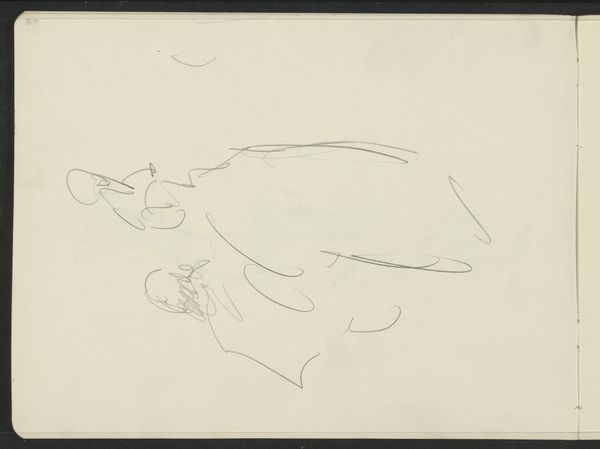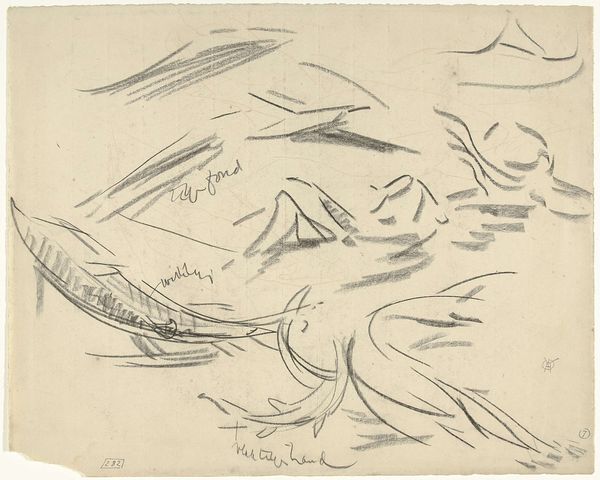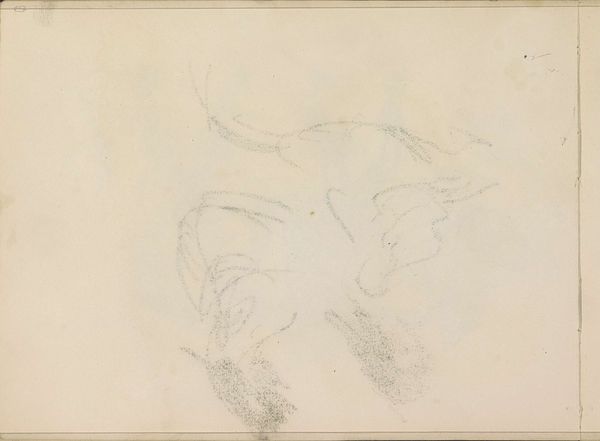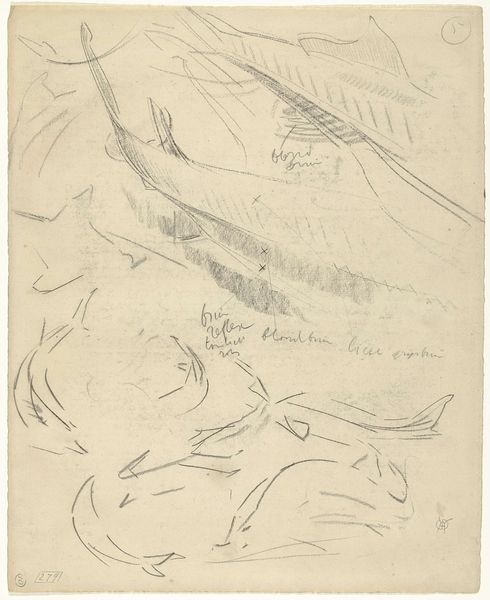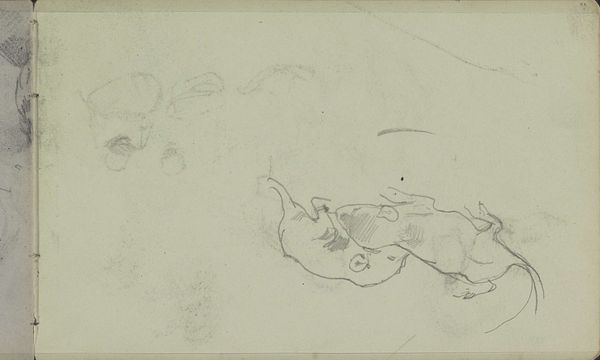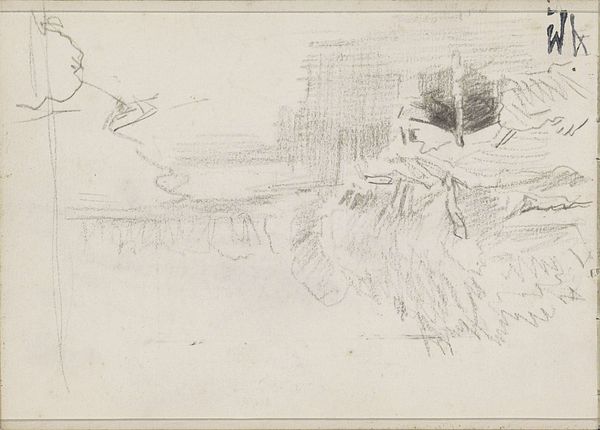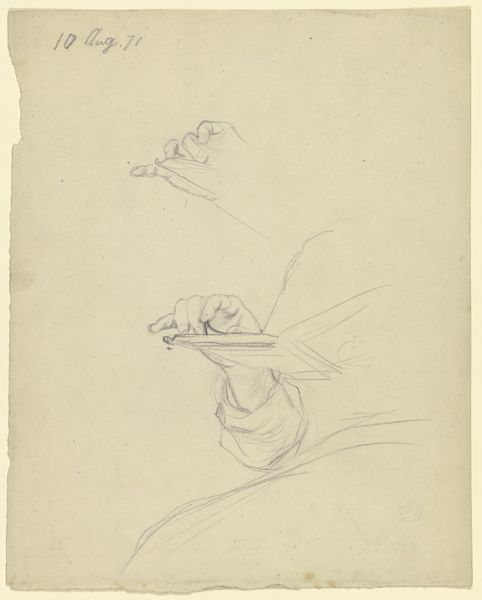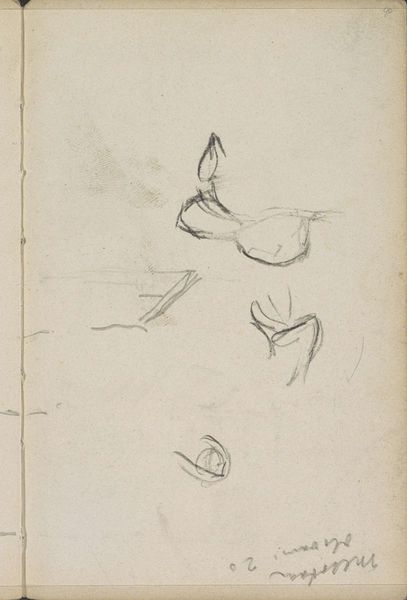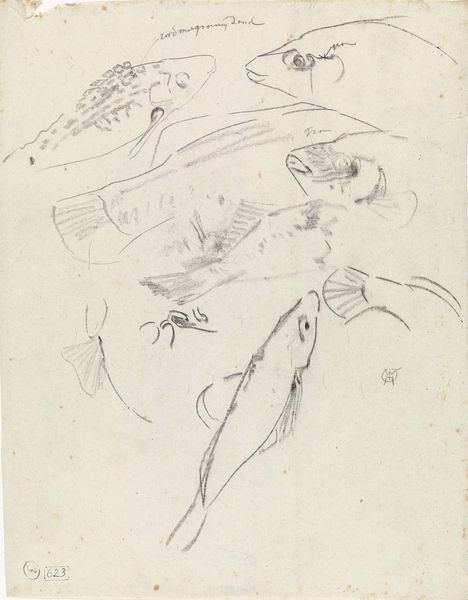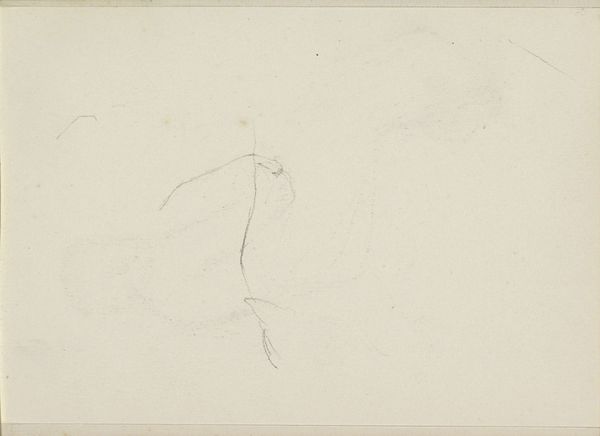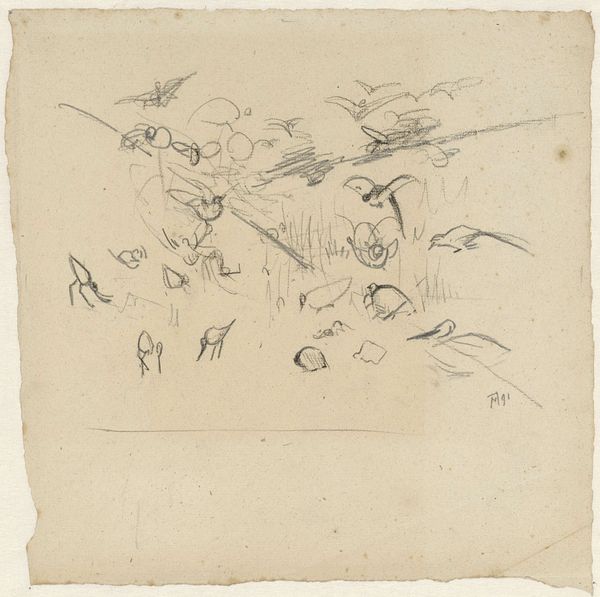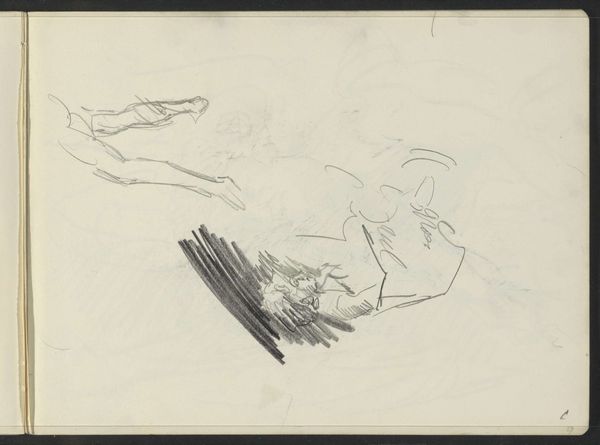
drawing, ink
#
drawing
#
landscape
#
etching
#
figuration
#
ink
Dimensions: height 135 mm, width 137 mm
Copyright: Rijks Museum: Open Domain
Curator: Here we have "Vogels," or "Birds," a drawing from sometime between 1840 and 1880 by Johannes Tavenraat. It's rendered in ink, a seemingly simple composition featuring a few birds in flight and one perched, all against a minimalist backdrop. Editor: It strikes me as almost a study in freedom, despite the limited scope. There's a real lightness in the lines, a feeling of sketched spontaneity, even the negative space seems full of potential. Do you get that sense, or am I just projecting my desire to escape this audio booth? Curator: It's funny you mention escape, because historically, bird imagery in art has often represented just that. Freedom from earthly constraints, the soaring spirit...but it also depended on the type of bird. With Tavenraat we need to consider the socio-political conditions under which landscape drawing was taught and sold. The Royal Academy for instance. Editor: That makes sense. Were they intended to carry these weighty symbolic meanings, or were they simply… birds? I mean, is there an inherently political charge to every drawing made at that time, regardless of its context? Because I'm still kind of stuck on their casual quality, their breezy feeling, almost like Tavenraat was doodling during a long meeting. Curator: Perhaps a little of both? It’s very much within the norms of the landscape drawing practice from the period and clearly aimed to portray Dutch settings with great accuracy. These were also consumed as patriotic expressions. The Dutch Birdlife was also tied to cultural and symbolic meanings which resonated within a nationalist rhetoric. So while Tavenraat could have indeed doodled freely, there is meaning implied, especially within the consumption of this type of art in this period. Editor: So much for pure artistic impulse, then. But still, when I look at it, the overriding feeling is one of lightness. Of potential, if you like. Or maybe I just need a holiday. Curator: I agree, and there's value in responding to that "lightness," whatever its source. After all, the best art can sustain multiple readings, across different moments in history, and different perspectives in the present. Editor: Precisely. Which makes the whole exercise a bit like chasing these birds, trying to pin them down, when maybe they just want to fly.
Comments
No comments
Be the first to comment and join the conversation on the ultimate creative platform.

